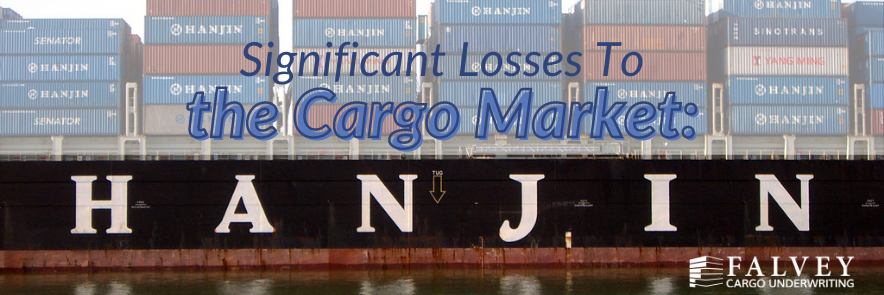In August 2016, Hanjin Shipping filed for bankruptcy protection after months of trying to avoid this fate. This filing immediately triggered massive disruptions. Worried about receiving payments, ports refused to allow Hanjin’s vessels, sailors, and cargo (about 540,000 containers) to dock or unload, leaving them stuck at sea. Some ships were arrested while docking. Shippers desperately tried to locate and gain control of their containers and cargo. Any containers already unloaded and waiting for pickup were held as collateral.
This was an unprecedented disaster for shippers, carriers, 3PLs, and the companies that owned the goods in the containers, sending shockwaves through a supply chain that was already stressed ahead of the busy Christmas season.
The Aftermath of Hanjin Shipping
The collapse of Hanjin Shipping, which had been the world’s seventh-largest container shipper, was the biggest container shipping bankruptcy in history and still has impacts on the transportation industry today.
From a legal and insurance perspective, the aftermath from Hanjin’s bankruptcy highlights shippers’ reliance on containerized shipments and the importance of having insurance coverage that can respond to extra expenses resulting from forwarding cargo to alternative destinations. There was a complex ownership structure at play with Hanjin Shipping, which is not unusual for the market:
- Vessels: Hanjin operated with its own ships and ships it leased from other companies; those companies faced not getting their vessels back, in addition to not getting paid for leasing them in the first place.
- Containers: Again, Hanjin only owned some of the containers on its vessels. The rest of the containers belonged to four other cargo companies (partners).
- Cargo Owners: The cargo in the containers was also not owned by Hanjin, leaving Assureds who were sending or receiving goods from Asia to the U.S. in limbo as their products were held hostage. Even after Hanjin filed for bankruptcy protection, cargoes experienced delays, an exclusion under the cargo policy. There was an unanticipated accumulation of cargo at various ports with the attendant risks of theft and delay in release, as well as additional forwarding and/or warehousing expenses required to complete the anticipated voyage.
Takeaways for the Cargo Market
Determining whether coverage losses and expenses were recoverable depended on the policy and facts, resulting in a long process that tied up involved parties for months. Delay (including spoilage, deterioration, decay, and/or change in temperature due to delay) is a peril that is excluded under most cargo policies. Additional costs, such as extra expenses to expedite freight, are usually dependent on the loss itself not being excluded.
If circumstances such as Hanjin occur in the future, the cargo policy provides warehousing and forwarding charges that specifically address the result of the insolvency or financial default of the owner, charterer, manager, or operator of the vessel or other conveyance.
Untangling who is responsible for losses when a bankruptcy of Hanjin’s magnitude is involved can be tricky. Review your contracts to understand whether your commercial policies provide coverage enhancements that will protect your business from damages and/or extra expenses that arise from these types of disruptions. Contact us to learn more.




